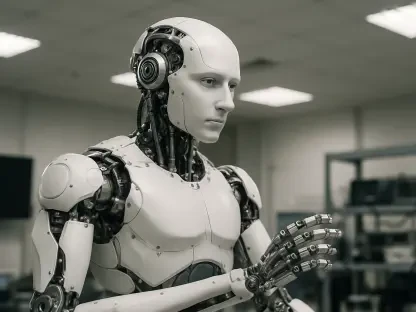The concept of Artificial General Intelligence (AGI) represents a pivotal goal in the field of artificial intelligence, where machines achieve cognitive capabilities comparable to human intellect. This ambitious target has led researchers to explore various methodologies to assess and advance the readiness of AI systems for AGI. One such innovative approach comes from China, where researchers have proposed using a trial-and-error mechanism to simulate natural selection, evaluating AI’s adaptability and learning capacity. The importance of AGI cannot be overstated, as achieving this level of machine intelligence could revolutionize multiple industries, from healthcare to autonomous transportation. By understanding the challenges and potential solutions in AGI development, researchers can better navigate the complex landscape of artificial intelligence.
Defining AGI and Current Technological Limitations
Artificial General Intelligence is a theoretical concept where AI systems possess the ability to understand, learn, and apply knowledge across a wide range of tasks, much like a human. Despite significant advancements in narrow AI applications, AGI remains an elusive and vaguely defined milestone. The current landscape sees AGI as a distant goal, often compared to the hopeful ambitions surrounding quantum computing, and used as a means to secure funding for ongoing research. The gap between narrow AI and AGI is substantial, highlighting the difference between specialized intelligence – such as that seen in modern machine learning systems – and a versatile, human-like intellect that could seamlessly switch between diverse tasks.
Technological limitations pose significant barriers to achieving AGI. Even state-of-the-art AI models that excel in specific tasks struggle with unknown problems requiring autonomous adaptability. Researchers argue that for AGI to be realized, it must overcome these challenges and demonstrate the ability to function independently without human intervention in diverse scenarios. This level of adaptability requires advancements in areas like neural network architecture, learning algorithms, and computational resources. Without these breakthroughs, the vision of AGI remains a theoretical pursuit rather than a near-term reality. Moreover, the inherent complexity of AGI means that even incremental progress requires substantial innovation in multiple domains simultaneously.
The “Survival Game” Methodology
In an effort to create a standardized evaluation for AGI readiness, a team from Tsinghua University and Renmin University of China developed the “Survival Game.” This method aims to test AI’s capability to learn and adapt through continuous trial and error, much like natural selection processes in biology. The evaluation focuses on assessing AI systems across various domains without human supervision. By simulating environments where AI must adapt through iterative learning, researchers hope to identify which models possess the robustness and flexibility needed for AGI. This approach attempts to mimic the adaptive processes seen in natural evolution, providing a more dynamic and realistic assessment of AI capabilities beyond static benchmarks.
The practical application of this methodology involves tasks such as image classification, question answering, and problem-solving. Researchers measure the AI’s performance based on the number of trial-and-error attempts required to reach correct solutions, providing a clear metric for adaptability and learning efficiency. This approach offers a unique perspective on the inherent challenges AI systems face when dealing with novel and unfamiliar situations. By continuously testing and refining AI models in a wide range of scenarios, the “Survival Game” seeks to create a more comprehensive understanding of what is required for machines to achieve AGI. This ongoing testing is essential, as it reveals the limitations of current models and highlights areas where further development is needed.
Evaluating AI Performance Across Multiple Domains
The “Survival Game” involves putting AI models through a rigorous testing phase in different domains, such as image classification and mathematical problem-solving. For instance, in image classification tasks, AI systems are evaluated based on the number of trials needed to achieve accurate results. This process highlights the models’ ability to continuously learn and adapt over time. Tracking the number of incorrect attempts before arriving at correct classifications provides insights into a model’s learning process and resilience. Such rigorous testing is vital for assessing whether AI systems can handle the unpredictability and complexity of real-world applications, moving beyond controlled environments and specialized tasks.
In addition to image classification, AI models are tested in question-answering domains using diverse datasets like MMLU-Pro, NQ, and TriviaQA. Moreover, the mathematical problem-solving skills of AI are assessed using datasets such as CMath, GSM8K, and MATH competitions. These varied tests offer comprehensive insights into the AI’s performance and highlight the areas requiring improvement for true AGI readiness. By analyzing performance across such diverse datasets, researchers can determine how well AI models generalize knowledge and tackle unforeseen problems. This data-driven approach provides a more nuanced understanding than traditional benchmarks, which often fail to capture the full spectrum of abilities required for AGI.
Challenges in Achieving Autonomous AGI
The findings from these evaluations reveal that AI models, despite excelling on predefined benchmarks, face significant challenges when tackling unknown problems. The inability to autonomously adapt in open environments underscores the need for further advancements in AI’s trial-and-error learning capabilities. Researchers argue that overcoming these obstacles is crucial for real-world applications such as autonomous agents and self-driving cars. In open-ended environments, unexpected variables and scenarios are the norm, making adaptability a quintessential trait for any AGI aspirant. Addressing these gaps involves delving deeper into unsupervised and reinforcement learning, aiming to create systems that can independently navigate and solve novel problems.
Another critical challenge is the immense computational and hardware requirements needed to support AGI. Even if Moore’s Law continued to hold true, the sheer scale of neural networks demanded for AGI-like performance would be unattainable with current technology. The estimates suggest that to match the cognitive processing power of human brains, AI systems would need an exponentially larger number of model parameters and computational resources. Such hardware limitations present a bottleneck that cannot be easily overcome with incremental improvements, necessitating revolutionary advances in computing paradigms. This immense demand for computational power also raises concerns about the environmental impact and sustainability of pursuing AGI, pointing to the need for more efficient technologies.
Realistic Projections and Future Directions
Artificial General Intelligence (AGI) is a theoretical concept where AI systems would have the capability to understand, learn, and apply knowledge across a broad range of tasks, similar to human intelligence. Despite significant progress with narrow AI, AGI remains an elusive and vaguely defined goal. Currently, AGI is seen as a distant objective, likened to the ambitious hopes tied to quantum computing, and often used as a justification for securing research funding. The gap between narrow AI and AGI is vast, underscoring the difference between highly specialized intelligence, as seen in today’s machine learning models, and a versatile, human-like intellect capable of seamlessly transitioning between diverse tasks.
Technological limitations present significant hurdles to achieving AGI. Even the most advanced AI models, which excel in specific areas, struggle with unknown problems that require autonomous adaptability. To make AGI a reality, researchers argue that it must be able to function independently in a variety of scenarios without human guidance. Advancements in neural network structures, learning algorithms, and computational resources are essential for this level of adaptability. Without these breakthroughs, AGI remains a theoretical pursuit. Additionally, the complexity of AGI means that even small progress demands substantial innovations across multiple fields simultaneously.









